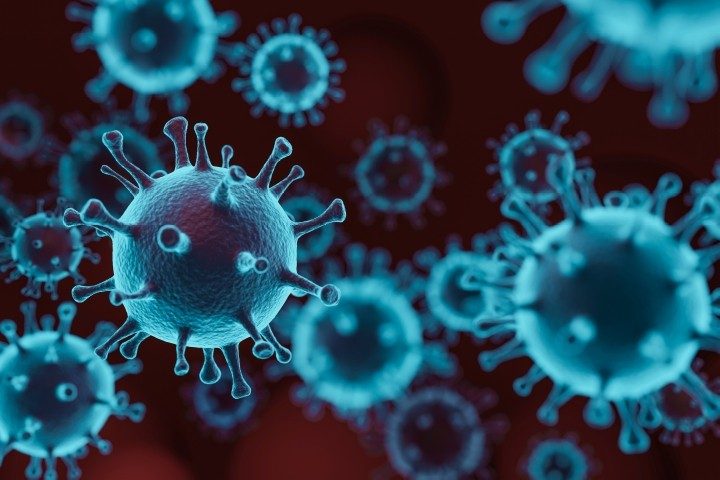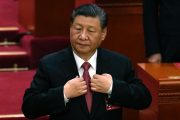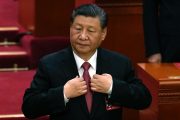
CNN has revealed 117 pages of leaked documents from the Hubei Provincial Center for Disease Control and Prevention on how Chinese officials handled the outbreak of COVID-19 when it first appeared.
The documents, which were given to CNN by an anonymous whistleblower and verified by six independent experts, offer in-depth information on two specific days, February 10 and March 7, that contradicts what officials said publicly at the time. As CNN reported:
This discrepancy was likely due to a combination of a highly dysfunctional reporting system and a recurrent instinct to suppress bad news, said analysts. These documents show the full extent of what officials knew but chose not to spell out to the public.
On February 10, when China reported 2,478 new confirmed cases nationwide, the documents show Hubei actually circulated a different total of 5,918 newly reported cases. The internal number is divided into subcategories, providing an insight into the full scope of Hubei’s diagnosis methodology at the time.
“Confirmed cases” number 2,345, “clinically diagnosed cases” 1,772, and “suspected cases” 1,796.
The strict and limiting criteria led ultimately to misleading figures, said analysts. “A lot of the suspected cases there should have been included with the confirmed cases,” said Yanzhong Huang, senior fellow for global health for the Council on Foreign Relations (CFR), who reviewed the documents and found them to be authentic.
“The numbers they were giving out were conservative, and this reflects how confusing, complex and chaotic the situation was,” he added.
Or perhaps China lied to the outside world about the number of people who caught the virus, and CNN is portraying China’s behavior as a result of systemic failures, not an overt cover-up.
According to Andrew Mertha, director of the China Studies Program at John Hopkins University, the document’s organization allowed authorities to conceal the actual number of cases.
Mertha went on to say, “China had an image to protect internationally, and lower-ranking officials had a clear incentive to under-report — or to show their superiors that they were under-reporting — to outside eyes.”
The Hubei CDC was underfunded, lacked the right testing equipment, its staff was underutilized and often constrained.
According to CNN, “The report characterizes the Hubei CDC as underfunded, lacking the right testing equipment, and with unmotivated staff who were often felt ignored in China’s vast bureaucracy.”
While China has continuously defended its reaction to the outbreak, Huang says the leaked documents reveal that “It was clear they did make mistakes — and not just mistakes that happen when you’re dealing with a novel virus — also bureaucratic and politically-motivated errors in how they handled it.”
Huang then put in a barb against President Trump:
These had global consequences. You can never guarantee 100% transparency. It’s not just about any intentional cover-up; you are also constrained with by technology and other issues with a novel virus. But even if they had been 100% transparent, that would not stop the Trump administration downplaying the seriousness of it. It would probably not have stopped this developing into a pandemic.
So, China was “constrained,” while Trump deliberately “downplayed” the virus.
The article then defends China’s massive lockdown and surveillance state, saying:
According to a study published in the journal Science in May, the stringent measures adopted during those first 50 days of the pandemic likely helped break the localized chain of transmission.
During the last 30 years, analysts say, many in China have appeared willing to relinquish political freedoms in return for increased material wealth, social stability, and greater opportunities….
No mention is made by officials of a so-called laboratory leak, or that the virus was man-made, as some critics, including top US officials, have claimed without evidence.
So, by CNN’s admission, China lied (or was “mistaken”) about the number of cases. But today, the Chinese government is telling the truth when it says the nation is close to zero local cases, and the virus is mostly contained?
CNN noted that the “average time between the onset of symptoms to confirmed diagnosis was 23.3 days, which … would have significantly hampered steps to both monitor and combat the disease.”
The Daily Mail released a report yesterday explaining why testing was so slow:
Cronyism, state secrecy, and needless bureaucracy may have robbed China of the chance to stop coronavirus before it became a pandemic. An investigation into the country’s early testing fiasco has revealed.
Investigators found that just three obscure companies with close ties to officials at China’s CDC were initially allowed to make tests to detect the virus, most of which were unreliable and took ages to return results because of a decision to process all of the kits in Beijing.
That meant officials in charge of overseeing the country’s response to the pandemic were blinded to the disease’s spread because of a lack of accurate testing data.
Meanwhile, patients whose doctors were sure had the virus were discharged from the hospital after testing negative on a faulty kit and went on to infect others.
For almost two weeks between January 5 and January 17, China officially recorded no new cases of the virus when in fact, hundreds were infected, as officials delayed ordering travel bans, bans on gatherings, and city-wide lockdowns.
While it is impossible to say for certain, one study suggested that had those actions been taken two weeks earlier, it could have reduced the overall number of cases by 86 percent — which might have been enough to stop the pandemic.
China’s Center for Disease Control and Prevention gave three obscure companies from Shanghai exclusivity contracts to manufacture the testing kits. These companies, “GeneoDx Biotech, Huirui Biotechnology, and BioGerm Medical Technology — paid the China CDC one million RMB ($146,600) each for the information and the distribution rights.” It was not until January 26 that the Chinese officials allowed other companies to manufacture the kits; by then, millions of people had left Wuhan, the virus’s epicenter, spreading it worldwide.
Of course, according to China’s official propaganda outlet People’s Daily:
#COVID19 did not start in central China’s Wuhan but may come through imported frozen food and packaging: experts
All available evidence suggests that the coronavirus, which has infected more than 59 million people in 190 countries, did not start in central China’s Wuhan, experts reiterated.



